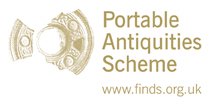Server check!
You are on the training database
Lock-Rings
Ornaments, whose function is unknown, made from gold plates in triangular cross-section and secured by a binding strip, resulting in a hollow ring. The face plates can be decorated with repoussé decoration or with fine concentric incised lines imitating fine wire works. More rarely, lock-rings are made from face plates obtained from individual gold wires soldered together.
Dating and areas of discovery
Date: 1000BC- 750BC circa
Distribution: Ireland, England, Wales, Scotland
Examples
Gold face plates in triangular cross-section secured by a binding strip BM WG.18
Gold face made from wires soldered together plates in triangular cross-section BM WG.20
References
-
Eogan, G. 1969. 'Lock-rings' of the Late Bronze Age. Proceedings of the Royal Irish Academy, 67C, 93-148
-
La Niece S. & Cartwright C. 2009. Bronze Age Gold Lock-rings with Cores of Wax and Wood. Kienlin T.L. & Roberts, B.W. (eds.) Metals and Societies. Studies in honour of Barbara S. Ottaway. Bonn: Universitätsforschungen zur prähistorischen Archäologie, 307-312.




